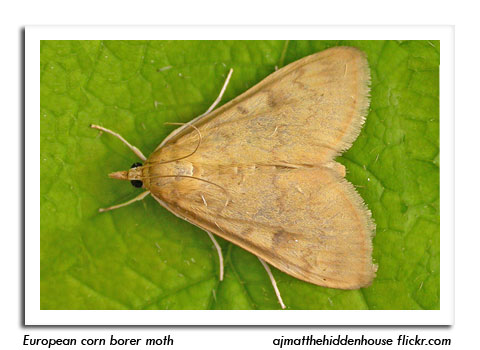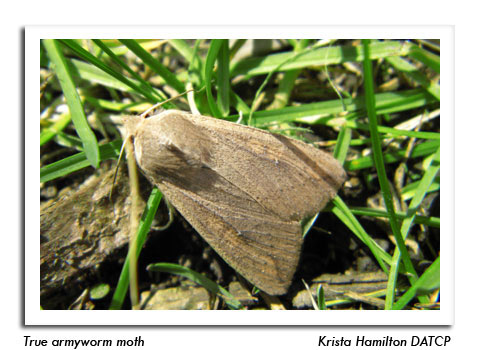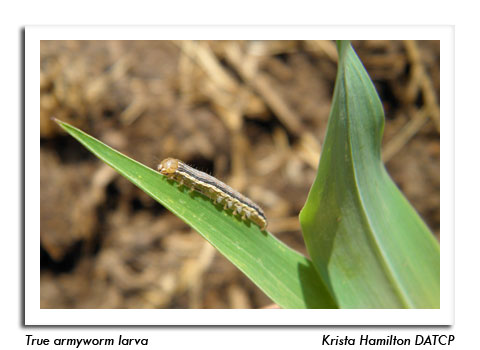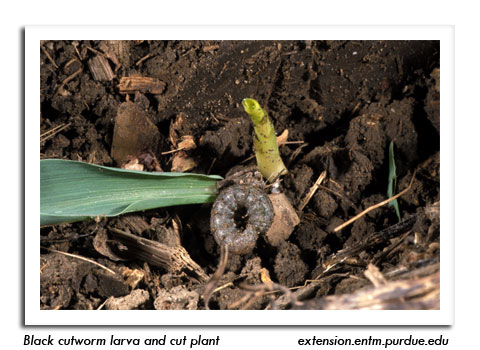
 |
|
|
Corn
Volume 59 Number 6 Date 06/05/2014 EUROPEAN CORN BORER - The spring flight of corn borer moths began this week, with low counts of 1-4 moths per trap registered in the Chippewa Falls, Coon Valley and Mazomanie black light traps. The degree day model for this pest suggests egg deposition is starting in areas of the state where 450 degree days (modified base 50°F) have accumulated, such as Beloit, Hancock, Madison and La Crosse. If warm temperatures continue, the first flight could peak by June 15 in the south-central and southwestern counties, June 21 in the southeastern and central areas, and about one week later in the north. BLACK CUTWORM - Larvae resulting from migrants that arrived last month are now in the destructive late-instar cutting stages. Perhaps the most important factors influencing their damage potential are previous weed infestation and reduced tillage, but crop advisors and corn growers should be aware that problems can develop in conventionally tilled and Bt fields as well. Timely detection of cutworm infestations is critical for insecticide treatments to be effective and economical. A rescue treatment is justified if 3% of corn plants are damaged. TRUE ARMYWORM - Minor flights have been documented on warmer evenings for several weeks, signaling a potential for larval infestations in small grains and corn. Reduced tillage corn following sod or a small grains cover crop, and fields with early-season grassy weed pressure are candidates for armyworm problems. Damage usually appears first in the marginal rows of fields, where the larvae arrive when moving from another food source. STALK BORER - Larvae are expected to begin migrating from grassy areas into corn in the next two weeks. Spot checking the peripheral 4-6 rows for plants with holes in the leaves, wilted whorls and other early signs of damage is advised starting at 1,400 degree days (sine base 41°F). Control measures may be in order for fields with infestation rates of 5% or greater. Stalk borer degree day accumulations as of June 4 were: Beloit 976, Madison 887, La Crosse 862, and Platteville 956. -- Krista Hamilton, DATCP Entomologist 




|
|
|